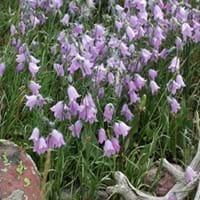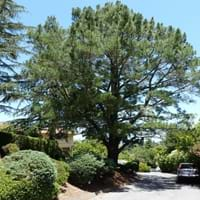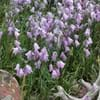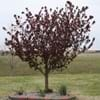Life Span
Perennial
Perennial
Origin
Caribbean
California, Mexico
Types
Campanula persicifolia, Campanula glomerata, Campanula carpatica
Not Available
Number of Varieties
Not Available
Habitat
Terrestrial
Not Available
USDA Hardiness Zone
10-13
7-9
Sunset Zone
H1, H2, 13, 20, 21, 22, 23, 24
H1, 8, 9, 14, 15, 16, 17, 18, 19, 20, 21, 22, 23, 24
Habit
Oval or Rounded
Upright/Erect
Flower Color
White, Light Pink
Not Available
Flower Color Modifier
Bicolor
Bicolor
Fruit Color
Black
Not Available
Leaf Color in Spring
Green, Dark Green
Dark Green
Leaf Color in Summer
Green, Dark Green
Dark Green
Leaf Color in Fall
Green, Dark Green
Dark Green
Leaf Color in Winter
Green, Dark Green
Dark Green
Leaf Shape
Irregular
Pinnate
Plant Season
Spring, Summer, Fall
Spring, Summer, Fall
Sunlight
Full Sun, Partial Sun, Partial shade
Full Sun, Partial Sun
Growth Rate
Slow
Not Available
Type of Soil
Loam, Sand
Clay, Loam, Sand
The pH of Soil
Neutral, Alkaline
Acidic, Neutral, Alkaline
Soil Drainage
Well drained
Well drained
Bloom Time
Indeterminate
Not Available
Where to Plant?
Ground
Ground
How to Plant?
Divison, Seedlings
Stem Planting
Plant Maintenance
Medium
Medium
Watering Requirements
Average Water Needs, Keep ground moist, Requires consistently moist soil
Allow soil to be completely dry in between waterings, Requires watering in the growing season, Water less during winter
In Summer
Lots of watering
Lots of watering
In Spring
Moderate
Moderate
In Winter
Average Water
Average Water
Soil pH
Neutral, Alkaline
Acidic, Neutral, Alkaline
Soil Type
Loam, Sand
Clay, Loam, Sand
Soil Drainage Capacity
Well drained
Well drained
Sun Exposure
Full Sun, Partial Sun, Partial shade
Full Sun, Partial Sun
Pruning
Cut limbs, Remove branches, Remove damaged leaves, Remove dead branches, Remove dead leaves, Remove dead or diseased plant parts
Prune in late summer or fall, Remove dead or diseased plant parts
Fertilizers
Apply N-P-K
very little fertilizers at a time
Pests and Diseases
Red blotch
Monterey pine midge, Monterey pine needleminer, Monterey pine scale, Monterey pine shoot moth, Monterey pine tip moth, Monterey pine weevil, Needle rust, Needlecast disease, Pine needle scale, Pinewood nematode, Pitch canker, Red blotch, Red turpentine beetle, Root rot, Spider mites, Western gall rust
Plant Tolerance
Salt
Drought
Flower Petal Number
Single
Not Available
Fragrant Bark/Stem
No
Yes
Showy Bark
Not Available
No
Foliage Texture
Coarse
Fine
Foliage Sheen
Glossy
Matte
Attracts
Hummingbirds
Not Available
Allergy
Not Available
Asthma, Respiratory problems, Skin irritation
Aesthetic Uses
Showy Purposes
Showy Purposes
Beauty Benefits
Not Available
Not Available
Edible Uses
Insignificant
No
Environmental Uses
Air purification
Air purification, Shadow Tree
Medicinal Uses
Not Available
Not Available
Part of Plant Used
Flowers
Sap, Wood
Other Uses
Used as Ornamental plant
used for making roof trusses, poles, joists, piles, Used for woodware, Used in construction, Used in Furniture
Used As Indoor Plant
Insignificant
No
Used As Outdoor Plant
Yes
Yes
Garden Design
Feature Plant, Foundation, Mixed Border, Shade Trees, Tropical
Feature Plant, Screening / Wind Break, Shade Trees
Botanical Name
PORTLANDIA grandiflora
PINUS radiata
Common Name
Bellflower, Jamaican Tree-lily
Monterey Pine
In Hindi
Bellflower plant
मोंटेरी पाइन
In German
Glockenblumen - Pflanze
Monterey-Kiefer
In French
plante Bellflower
Monterey Pine
In Spanish
planta de Bellflower
El pino de Monterrey
In Greek
φυτό καμπανούλα
Monterey Pine
In Portuguese
planta Bellflower
Monterey Pine
In Polish
dzwonek roślin
Monterey Pine
In Latin
bellflower herba
Pine
Phylum
Magnoliophyta
Pinophyta
Class
Magnoliopsida
Pinopsida
Order
Gentianales
Pinales
Family
Rubiaceae
Pinaceae
Clade
Angiosperms, Asterids, Eudicots
Not Available
Tribe
Chiococceae
Not Available
Subfamily
Cinchonoideae
Pinoideae
Number of Species
Not Available
Not Available
Season and Care of Bellflower and Monterey Pine
Season and care of Bellflower and Monterey Pine is important to know. While considering everything about Bellflower and Monterey Pine Care, growing season is an essential factor. Bellflower season is Spring, Summer and Fall and Monterey Pine season is Spring, Summer and Fall. The type of soil for Bellflower is Loam, Sand and for Monterey Pine is Clay, Loam, Sand while the PH of soil for Bellflower is Neutral, Alkaline and for Monterey Pine is Acidic, Neutral, Alkaline.
Bellflower and Monterey Pine Physical Information
Bellflower and Monterey Pine physical information is very important for comparison. Bellflower height is 91.44 cm and width 91.44 cm whereas Monterey Pine height is 2,440.00 cm and width 300.00 cm. The color specification of Bellflower and Monterey Pine are as follows:
Bellflower flower color: White and Light Pink
Bellflower leaf color: Green and Dark Green
Monterey Pine flower color: Not Available
- Monterey Pine leaf color: Dark Green
Care of Bellflower and Monterey Pine
Care of Bellflower and Monterey Pine include pruning, fertilizers, watering etc. Bellflower pruning is done Cut limbs, Remove branches, Remove damaged leaves, Remove dead branches, Remove dead leaves and Remove dead or diseased plant parts and Monterey Pine pruning is done Prune in late summer or fall and Remove dead or diseased plant parts. In summer Bellflower needs Lots of watering and in winter, it needs Average Water. Whereas, in summer Monterey Pine needs Lots of watering and in winter, it needs Average Water.





